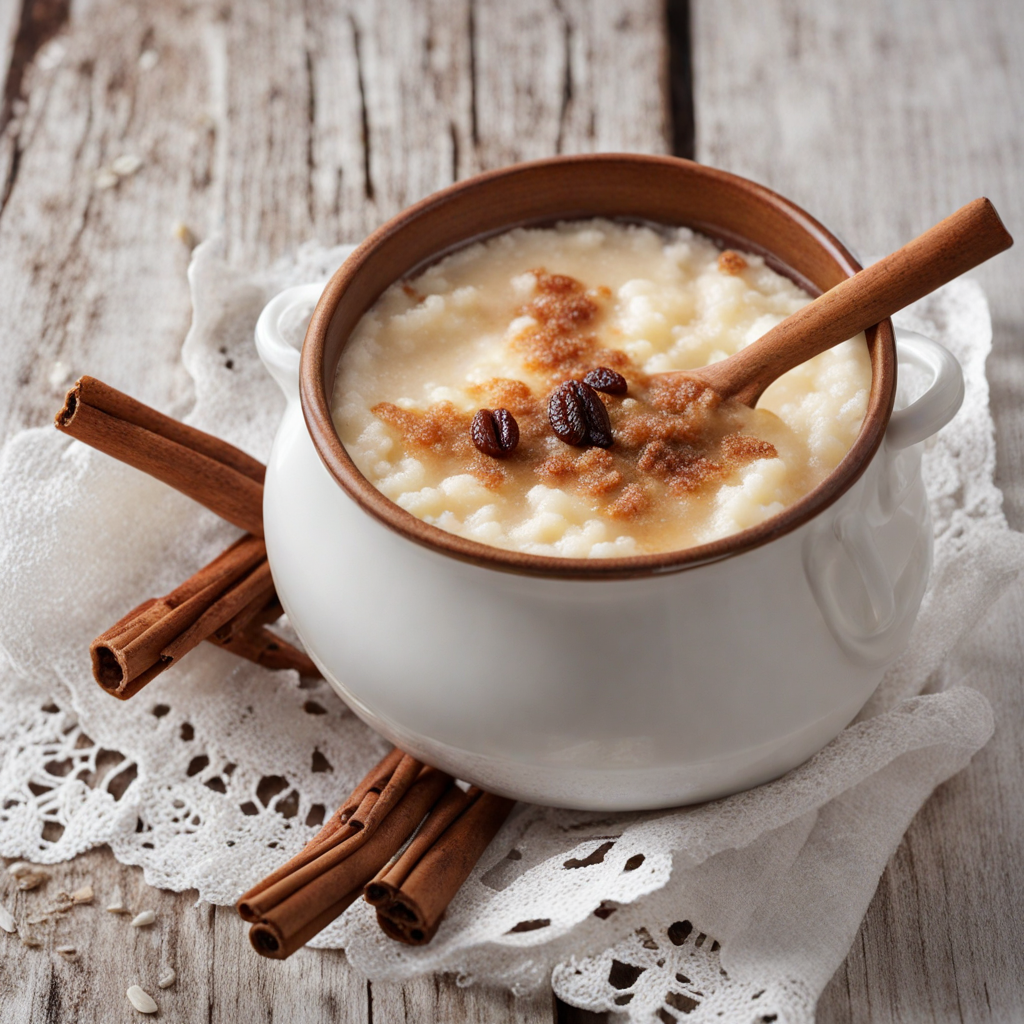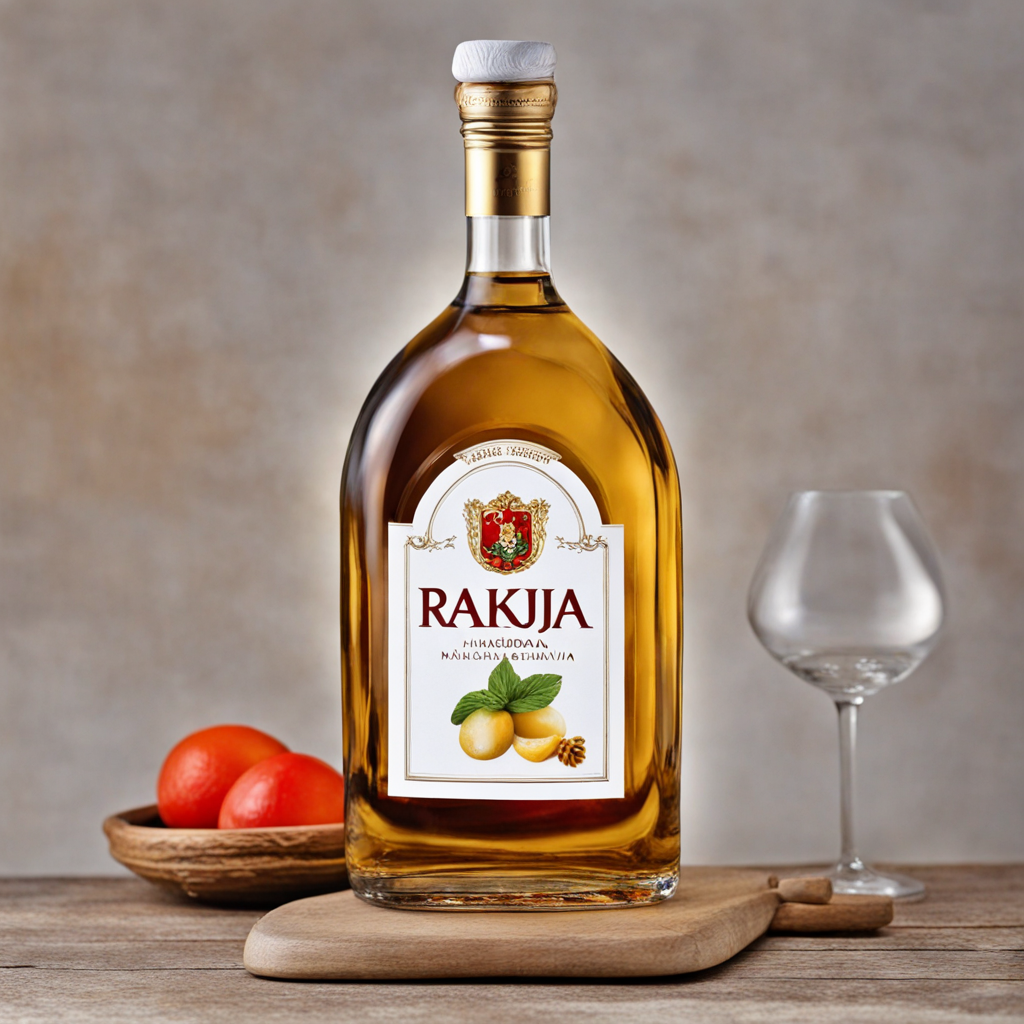Sutlijaš
Sutlijaš is a delightful traditional dessert hailing from North Macedonia, known for its creamy texture and comforting flavors. This sweet rice pudding is made by simmering rice in milk until it reaches a tender, almost velvety consistency. The gentle cooking process allows the rice to absorb the milk, creating a rich and luscious base that forms the heart of this beloved dish. Often sweetened with sugar and infused with a hint of vanilla or lemon zest, Sutlijaš offers a perfect balance of sweetness and warmth, making it an ideal treat for any occasion. The preparation of Sutlijaš is a labor of love, as the rice must be cooked slowly and stirred regularly to achieve the perfect consistency. Once the rice is tender and the mixture is creamy, it is typically poured into individual serving bowls or a large dish to cool. To elevate the flavor, a dusting of cinnamon or a drizzle of honey is often added just before serving, enhancing its sweetness and providing a fragrant touch. This dessert not only delights the palate but also evokes a sense of nostalgia, often enjoyed during family gatherings and festive celebrations. With its simple yet satisfying ingredients, Sutlijaš showcases the essence of North Macedonian cuisine, where comfort foods take center stage. Each spoonful transports you to a world of gentle sweetness, where the flavors meld together harmoniously. Whether enjoyed warm or chilled, Sutlijaš is a dessert that invites you to savor every bite, making it a perfect choice for those looking to explore new and delightful tastes from this beautiful Balkan country.
How It Became This Dish
Sutlijaš: A Sweet Journey Through Time #### Origins and Historical Context Sutlijaš, a beloved dessert from North Macedonia, holds a special place in the hearts and kitchens of many who have grown up in the region. This creamy rice pudding, made primarily from rice, milk, and sugar, often flavored with vanilla or lemon zest, is a dish that transcends mere nourishment. Its history is steeped in the cultural tapestry of the Balkans, reflecting a blend of influences from various civilizations that have passed through this vibrant land. The origins of sutlijaš can be traced back to the Ottoman Empire, which ruled over the Balkans for centuries and introduced a variety of culinary traditions. The word itself is derived from the Turkish word "süt," meaning milk, indicating the dish's dairy foundation. Rice, a staple grain in the Ottoman culinary repertoire, was often utilized in both savory and sweet dishes, showcasing the empire's agricultural diversity. As such, sutlijaš is not merely a Macedonian creation but rather a dish that emerged from the confluence of various cultures, where local ingredients and techniques were melded with those introduced by the Ottomans. #### Cultural Significance In North Macedonia, sutlijaš is more than just a dessert; it is a symbol of comfort, nostalgia, and familial bonds. Traditionally served during festive occasions, family gatherings, and religious celebrations, it has become a staple in Macedonian households. The dish embodies the spirit of hospitality, often prepared for guests as a gesture of warmth and generosity. The preparation of sutlijaš is generally a communal activity, often involving family members working together in the kitchen. This collaborative aspect of cooking reflects the deep-rooted values of kinship and togetherness in Macedonian culture. Sharing a bowl of sutlijaš at the end of a meal or during a celebration is a way to foster community ties and create lasting memories. In addition to its social significance, sutlijaš has also found its place in the realm of traditional medicine. In some households, it is believed that rice pudding possesses soothing properties, making it a go-to remedy for ailments such as upset stomachs or when one needs a comforting treat during times of illness. This medicinal aspect further highlights the dish's role in the cultural fabric of North Macedonia. #### Evolution and Variations Over Time As with many traditional dishes, sutlijaš has evolved over the years, adapting to changing tastes, dietary needs, and culinary trends. While the basic recipe remains relatively unchanged—rice, milk, sugar, and flavorings—variations have emerged that reflect regional preferences and innovations. Some people may add nuts, such as almonds or walnuts, for a delightful crunch, while others might incorporate dried fruits like raisins or apricots for added sweetness and texture. The introduction of modern cooking techniques and equipment has also influenced the preparation of sutlijaš. In the past, it was common to cook the rice slowly in a pot over an open flame, requiring patience and skill. Today, many cooks utilize electric stovetops and pressure cookers, which can significantly reduce cooking time without compromising the dish's essential qualities. This modernization has made sutlijaš more accessible to younger generations who may not have the same time or resources to spend on traditional cooking methods. Moreover, the globalization of food culture has brought new influences to sutlijaš. While it remains a cherished local dish, the rise of fusion cuisine and the increasing availability of international ingredients have led some cooks to experiment with flavors that were previously uncommon in Macedonian kitchens. For instance, the incorporation of coconut milk or the use of spices such as cardamom and cinnamon can be found in some contemporary interpretations of sutlijaš, reflecting a broader, more eclectic approach to traditional recipes. #### Sutlijaš in the Modern Culinary Landscape In recent years, there has been a resurgence of interest in traditional Macedonian cuisine, with sutlijaš at the forefront of this revival. Chefs and home cooks alike are embracing the notion of "slow food," which emphasizes the importance of using local ingredients and preserving culinary heritage. As a result, sutlijaš is often featured on the menus of restaurants that focus on authentic Macedonian dishes, allowing a new generation to experience this classic dessert. Culinary festivals and events celebrating Macedonian cuisine have also contributed to the renewed appreciation for sutlijaš. These gatherings often include cooking demonstrations, workshops, and tastings, showcasing not only the dish itself but also the stories and traditions associated with it. Such events provide a platform for sharing knowledge, fostering community spirit, and ensuring that the art of making sutlijaš continues to be passed down through generations. #### Conclusion Sutlijaš is more than just a rice pudding—it is a culinary emblem of North Macedonia's rich cultural heritage. Its origins in the Ottoman Empire, combined with its evolution through time and the significance it holds in Macedonian society, make it a remarkable example of how food can encapsulate history, identity, and tradition. As it continues to adapt and thrive in the modern culinary landscape, sutlijaš serves as a reminder of the importance of preserving cultural traditions while embracing innovation. Whether enjoyed in a family kitchen or served at a festive gathering, sutlijaš remains a beloved dish that nourishes both body and soul, bridging the past with the present and ensuring that its sweet legacy endures for generations to come.
You may like
Discover local flavors from North Macedonia







